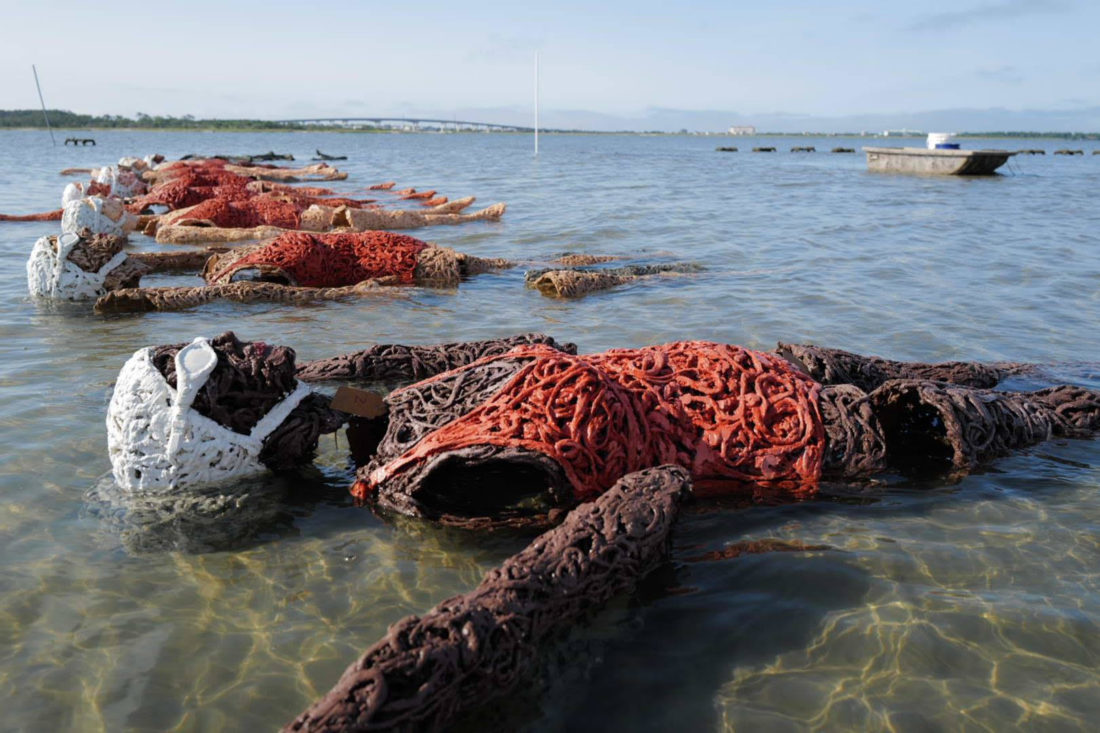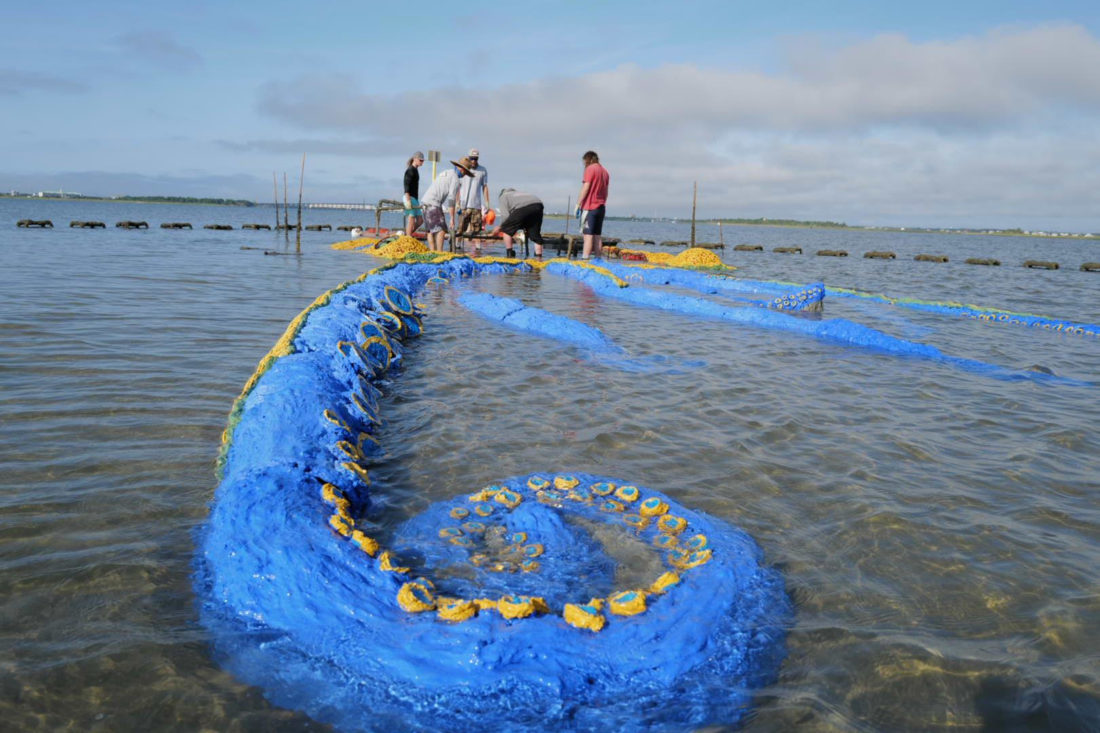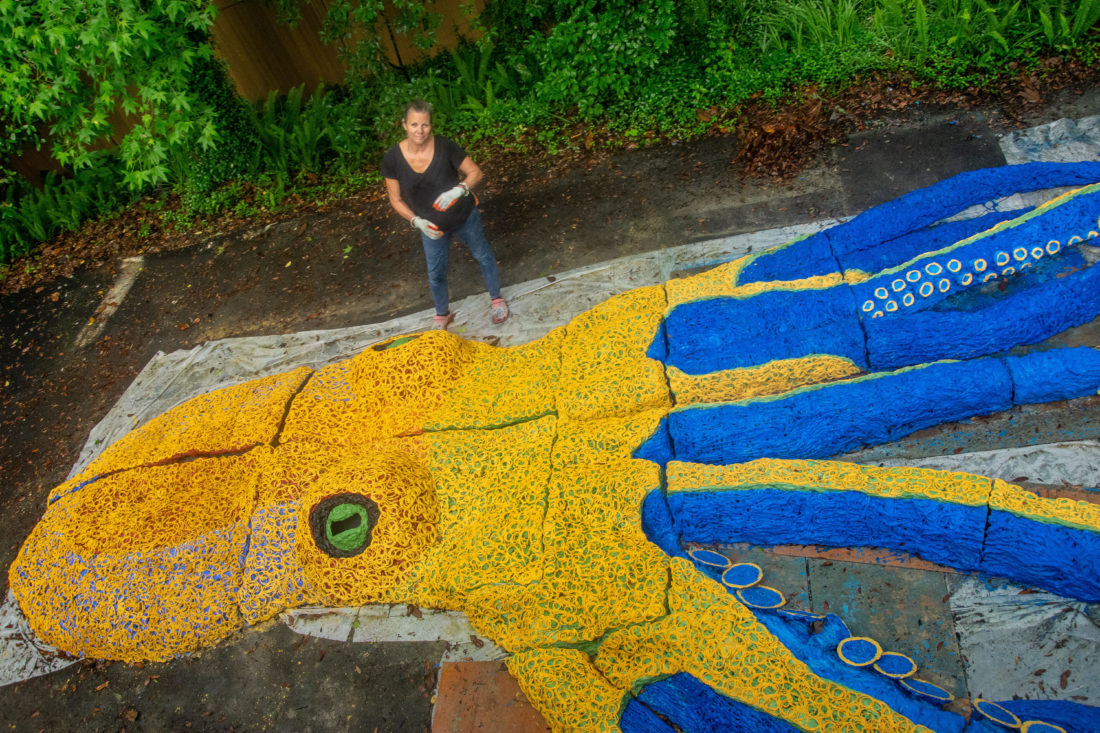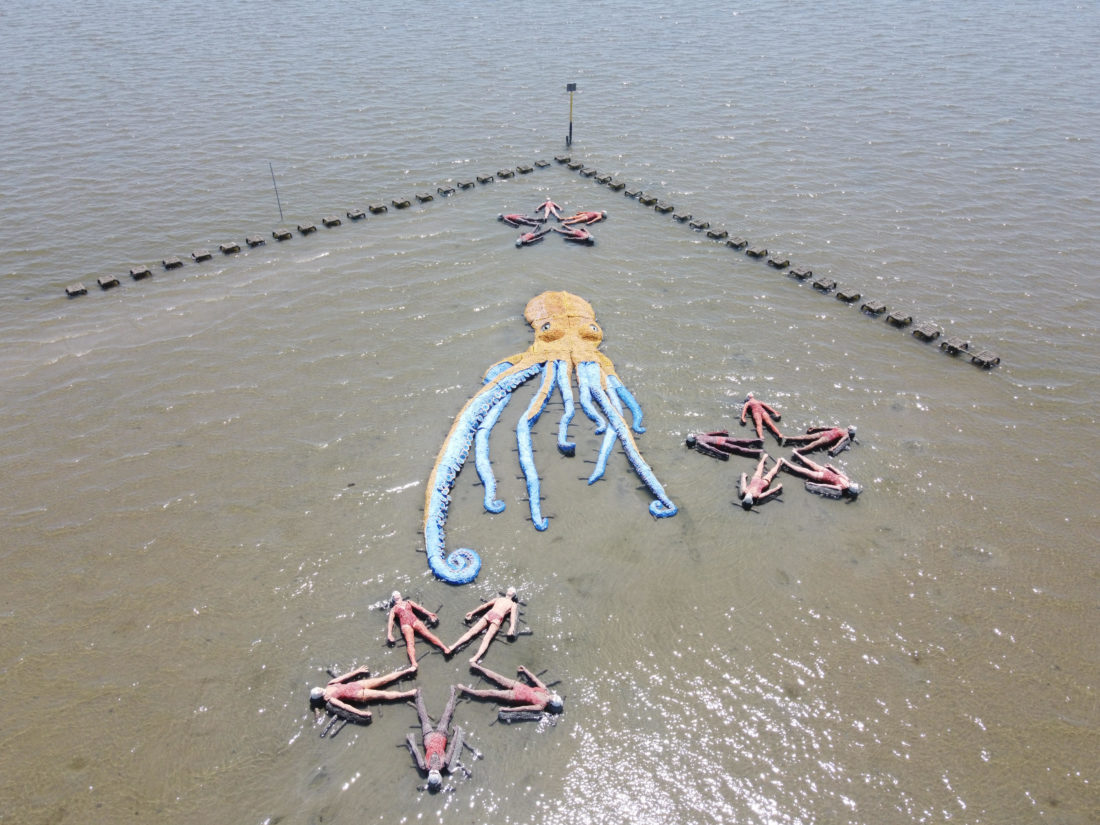Someone called 911 about Carolyn Henne’s latest sculpture—they saw it submerged in the waterway and thought it was a corpse.
The life-like figure was actually a test for an artwork now adorning the Newport River near Beaufort, North Carolina. Fifteen synchronized swimmers, their bodies forming three stars, surround a fifty-foot octopus on an intertidal sandbar. Henne sculpted the work, dubbed Sea Stars, from a biodegradable material designed to attract oyster larvae and create reefs.

Visitors can walk around the sculpture at low tide, kayak by it, see it on eco-tours, or view it from the air as they lift off or land at the Beaufort airport. Though the artwork is resplendent with blues, reds, and yellows, those hues will fade over time as oysters take over. “It is a little fantastical,” says Henne, a sculptor and professor of art at Florida State University.
The otherworldly idea was born when Henne met Niels Lindquist, a UNC–Chapel Hill marine sciences professor. Lindquist and his business partner, the commercial fisherman David “Clammerhead” Cessna, had invented an eco-friendly substrate used to build oyster reefs and prevent estuary shorelines from eroding due to climate change. The material combines plant fiber such as jute with cement. Lindquist was already fashioning it into different shapes to make reefs. He thought: Why not try a real sculpture to convey the message about the value of oysters and reefs?
Henne loved the notion. “It’s environmental art, but it’s also contributing to the improvement of the environment,” she says. That’s because oysters pull carbon dioxide out of the atmosphere and ocean—a single adult oyster can filter as many as fifty gallons of water a day. Reefs also provide habitat for crustaceans, fish, and shorebirds.

For the design, Henne liked the contrast of choreographed swimmers with an octopus’s free-form movements. She developed a hollow mold for the bodies and filled it with substrate to create the swimmers. A photo of a paralarval octopus—the stage when the creature spans all of an inch—provided inspiration for the rest of the piece. Henne constructed the octopus in her studio and on her driveway in Tallahassee using a frame of cardboard and chicken wire covered in plastic, then substrate. Once the substrate hardened, she removed the plastic and the frame.
Lindquist is excited about the sculpture’s educational potential for students at the UNC Institute of Marine Sciences in nearby Morehead City, eco-tour guests, and others as an “oyster reef and salt marsh mosaic,” he says. “Sea Stars will soon become an oyster-dense reef teeming with life. That alone will show the habitat value of oysters and the reefs they create. We’ll also tell visitors, in person and virtual, about all of the other valuable ecosystem services that oysters provide.”

Henne doesn’t mind that her art will eventually merge with the river. She specializes in large installations, and taking them apart or finding storage for them after an exhibition is no joy. For this one, she says, “I am perfectly happy to never have to go back and collect it.”
But that doesn’t mean she’ll never see it again. In several years, oysters on the sculpture should be ready for sustainable harvest, when new larvae will start the process again. “I can’t imagine what it’s going to be like,” Henne says, “popping an oyster off of my sculpture and eating it.”








